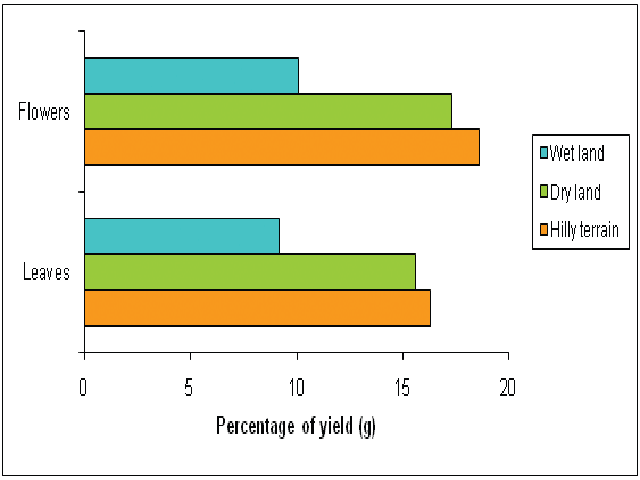The Comparative Studies of the Phytochemical Levels and the in vitro Antioxidant Activity of Tridax procumbens L. from Different Habitats
DOI:
https://doi.org/10.5530/fra.2017.1.8Keywords:
Tridax procumbens, Phytochemicals, Habitats, Antioxidant, IC50 valueAbstract
Background: Tridax procumbens is weed and randomly used in Ayurvedic system of medicine for hepatic problems such as jaundice, hepatitis, cirrhosis. It has been established that most powerful in improving the oxidative damage of liver injury caused by various factors. Objectives: To compared the in vitro antioxidant activity and quantity of the phytochemicals such as tannins, flavonoids, and total phenols, of the leaves and the flowers extracts of Tridax procumbens L. from different habitats. Methods & Methods: Tridax leaves and flowers were collected widely from the three different locations;-Hilly terrain, Dry-land, Wet-land and washed with distilled water, shade dried, coarsely powdered and extracted using 70% ethanol. The Phytochemicals levels and in vitro free radical scavenging activity were evaluated using standard protocols. Results: The flower and the leaf extracts of the hilly-terrain expressed the highest percentage of yield, total phenol and flavonoids contents, compared to the respective extracts of the dry and the wet-lands. Amongst all the extracts made, the flower extract of the hilly-terrain showed the lowest IC50 value and the highest in vitro free radical scavenging activity because of the highest contents of the flavonoids and total phenols. Conclusion: Biosynthesis of the secondary metabolites of Tridax procumbens is not only controlled genetically, but also strongly influenced by the habitats. Moreover, the antioxidant potential of plant extracts derived from high altitude samples were higher than dry and wet-lands. The location of collection of plants was found to have profound influence in repeatability of the experimental results.
Downloads
Metrics





